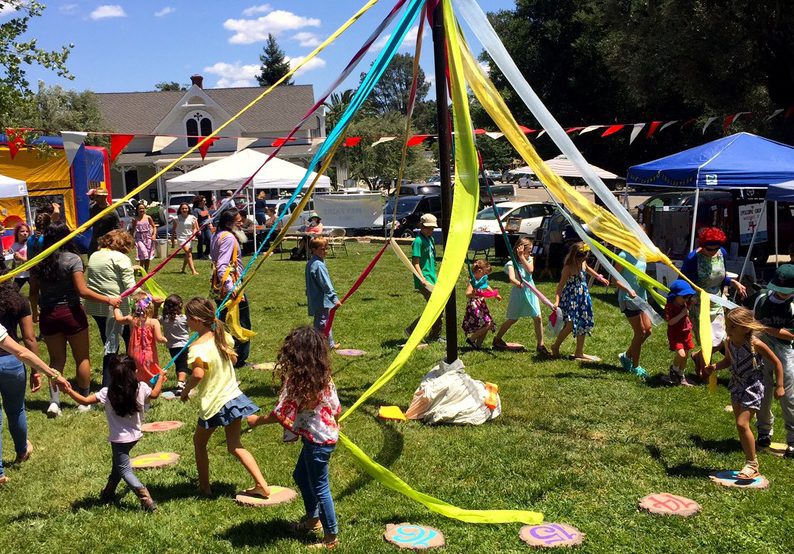By John Copeland
Would you believe January was not always the first month of the year? Even celebrating New Year’s on January 1 is a relatively new phenomenon. And yet, celebrating the start of the new year is perhaps the oldest holiday of all.
New Year’s is among the oldest and persistent of human celebrations.
Cuneiform clay tablets discovered in Iraq reveal that, more than 4,000 years ago, Babylonians were celebrating New Year’s. However, the Babylonian new year began with the first visible crescent moon after the spring equinox.
Several other ancient cultures celebrated their new year at other times, on dates tied to the seasons. The Egyptians, Phoenicians and Persians began their new year with the fall equinox, and the Greeks celebrated it on the winter solstice.
India and Iran celebrate their New Year in March. Ancient Hebrews celebrated New Year’s in the fall at Rosh Hashanah, and Jews worldwide still observe this tradition. Ancient Celts and other northern European cultures celebrated their new year beginning at dusk on October 31.
These varied dates for New Year’s begs the question: How did January become the first month on our calendar and the beginning of our new year? As a day, January 1 has no astronomical or agricultural significance for beginning the year. However, if you choose, we can blame the Romans. In fact, the month of January did not even exist until around 700 BCE, when the second king of Rome, Numa Pontilius, added January and February to the Roman calendar.
January is associated with the god Janus, who was the one Roman god with no Greek counterpart. In prayers, his name was evoked even before that of Jupiter.
According to some, he was the custodian of the universe but, to the Romans, he was the god of beginnings and endings, presiding over every entrance and departure. Because every door and passageway looks in two directions, Janus is always depicted as two-faced. One face looked back into the past, the other peered forward to the future.
In 46 BCE, Julius Caesar reformed the Roman calendar, introducing a new, solar-based calendar that was a vast improvement on the ancient Roman calendar, which had become wildly inaccurate over the years. The Julian calendar decreed that in the Roman Empire, the new year would begin with January 1.
After Rome’s decline and Christianity’s spread through Europe, the church considered New Year’s celebrations as pagan. In 567 CE the Council of Tours abolished January 1 as the beginning of the year. Throughout Medieval Christian Europe, the New Year was celebrated on a variety of dates: Dec. 25, the birth of Jesus; March 1; March 25, the Feast of the Annunciation; and Easter. There was no uniform calendar.
Then, during the late 1500s, at the urging of Pope Gregory XII, Aloysius Lilus came up with a modification to the Julian calendar to make it more accurate. Named the Gregorian calendar, it is the one most of the world follows today.
The Gregorian calendar reform restored January 1 as New Year’s Day. Although most Catholic countries adopted the Gregorian calendar almost immediately, it was only gradually adopted among Protestant countries. The British, for example, did not adopt the reformed calendar until 1752. Until then, the British Empire, including the American colonies, still celebrated the new year in March.
For us in the Northern Hemisphere, January is a logical time for a new beginning. On the December solstice in the Northern Hemisphere, we experience the shortest day of the year. By the beginning of January, our days are lengthening again. This return of longer hours of daylight had a profound effect on cultures that were tied to agricultural cycles. It even exerts an emotional effect on people living in cities today.
I think the ancient Romans were on to something with Janus as the god of new beginnings, gates and doors, the first hour of the day, the first day of the month, and the first month of the year. Janus is a good symbol for starting the New Year, both looking forward to the coming year and back in contemplation to the past year.
And that makes me think about New Year’s resolutions. Do you make them?
It is believed that the Babylonians were the first to make New Year’s resolutions, and people all over the world have been breaking them ever since.
The Romans also had a similar tradition of making New Year’s resolutions. A common resolution in ancient Rome was to ask forgiveness from enemies of the past year.
Early Christians believed the first day of the new year should be spent reflecting on mistakes and resolving to improve oneself in the new year.
Whether or not our ancestors took their resolutions seriously and always achieved what they resolved to do is unknown. Today, when we make resolutions, we’re tapping into that ancient and powerful human longing for a fresh start.
And then there is putting the past year to rest.
Any regrets about the past year? To help focus on the future, write down your regrets on a scrap of paper and toss it into the fire. Janus, the two-faced god of the New Year, would approve!






